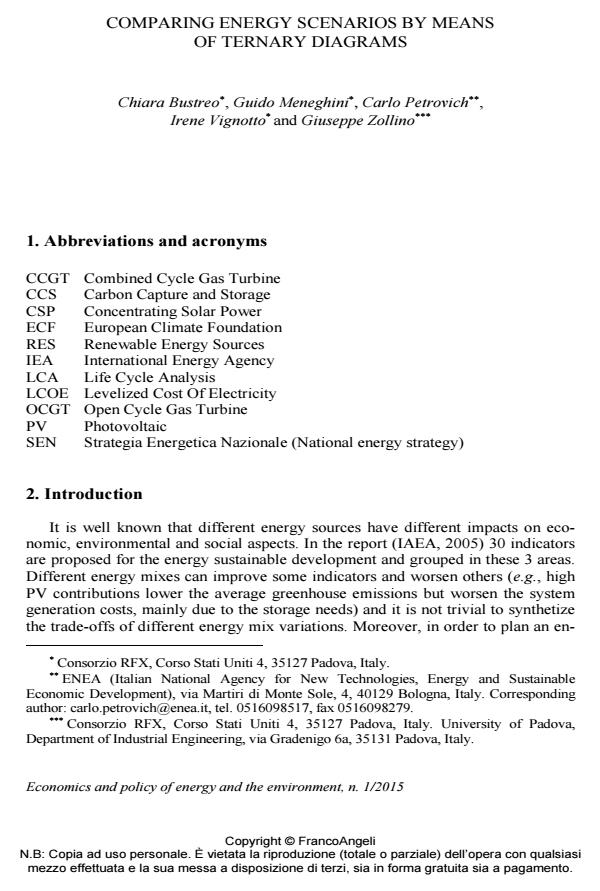Comparing energy scenarios by means of ternary diagrams
Titolo Rivista ECONOMICS AND POLICY OF ENERGY AND THE ENVIRONMENT
Autori/Curatori Chiara Bustreo, Guido Meneghini, Carlo Petrocvich, Irene Vignotto, Giuseppe Zollino
Anno di pubblicazione 2016 Fascicolo 2015/1
Lingua Inglese Numero pagine 17 P. 71-87 Dimensione file 261 KB
DOI 10.3280/EFE2015-001006
Il DOI è il codice a barre della proprietà intellettuale: per saperne di più
clicca qui
Qui sotto puoi vedere in anteprima la prima pagina di questo articolo.
Se questo articolo ti interessa, lo puoi acquistare (e scaricare in formato pdf) seguendo le facili indicazioni per acquistare il download credit. Acquista Download Credits per scaricare questo Articolo in formato PDF

FrancoAngeli è membro della Publishers International Linking Association, Inc (PILA)associazione indipendente e non profit per facilitare (attraverso i servizi tecnologici implementati da CrossRef.org) l’accesso degli studiosi ai contenuti digitali nelle pubblicazioni professionali e scientifiche
The use of ternary diagrams is here proposed as a straightforward means to show the relation between the electricity generating mixes and relevant scenario parameters, such as system carbon emissions (gCO2/kWh) and generation costs (c€/kWh). The effectiveness of the representation is improved by plotting contour lines inside the diagram to help the reader to identify the generation mixes that meet specific economic and environmental requirements. Along with the description of the potentiality of the ternary diagrams in the energy scenario field, an explanatory application is also reported. It demonstrates the helpfulness of the graph in performing preliminary assessments of specific energy policies. The levelized cost of electricity (LCOE) of a future (2030) Italian electricity generation system largely based on renewables - providing 50% of the demand - is plotted in a ternary diagram as function of the combination of different renewable electricity generation shares. The graph clearly shows that the cheapest electricity can be achieved by an electricity generation mix that covers 20-30% of the electricity demand with wind power, 0-20% with photovoltaic (PV) and 10-30% with the other renewables. Further assessments demonstrate that the PV capacity should be limited so as to reduce the installation of expensive energy storage capacity while wind power along with electricity from biomass could effectively contribute in reducing the system LCOE.
Parole chiave:Energy scenarios, renewables, Italian energy policy, ternary diagram
Jel codes:O21, Q48
Chiara Bustreo, Guido Meneghini, Carlo Petrocvich, Irene Vignotto, Giuseppe Zollino, Comparing energy scenarios by means of ternary diagrams in "ECONOMICS AND POLICY OF ENERGY AND THE ENVIRONMENT" 1/2015, pp 71-87, DOI: 10.3280/EFE2015-001006